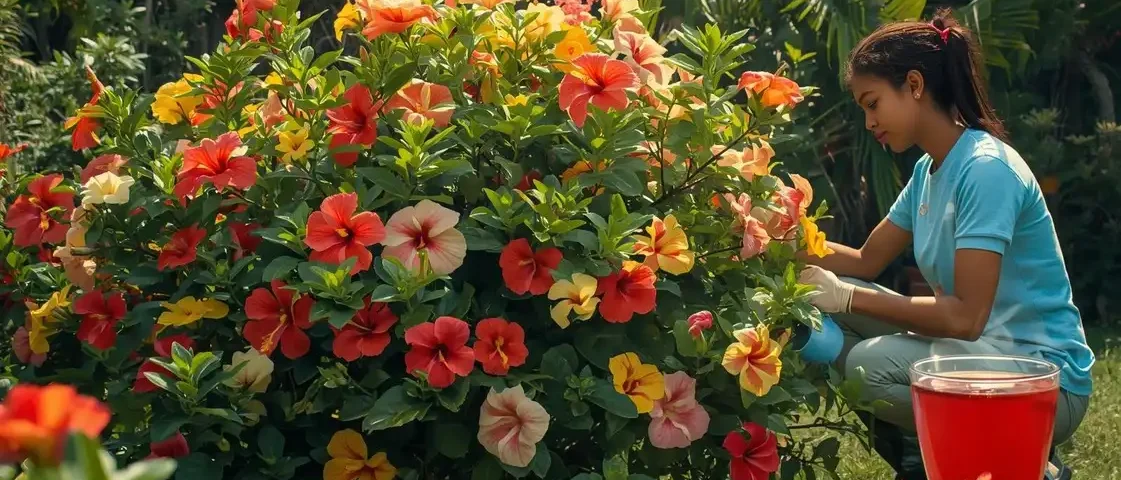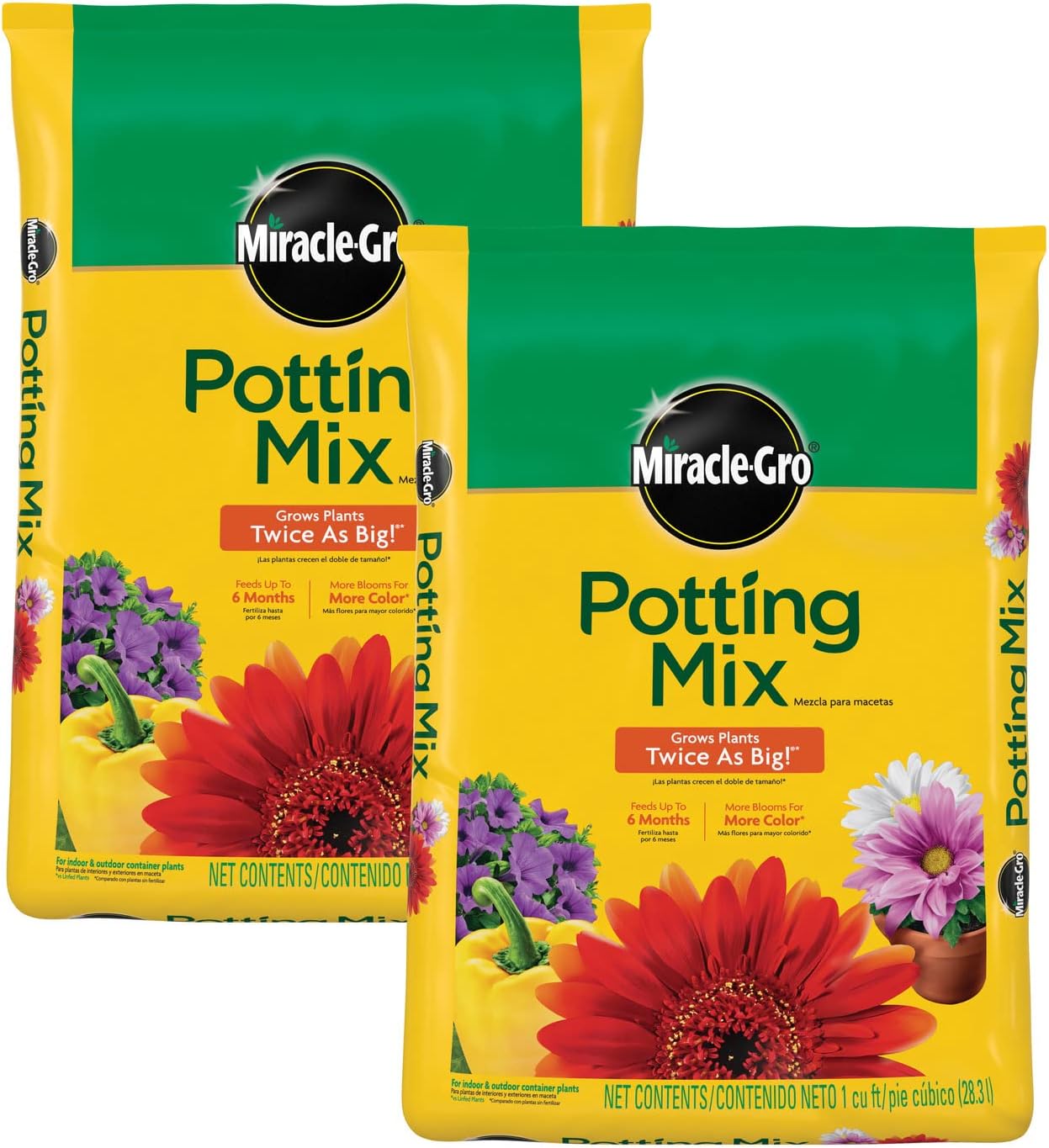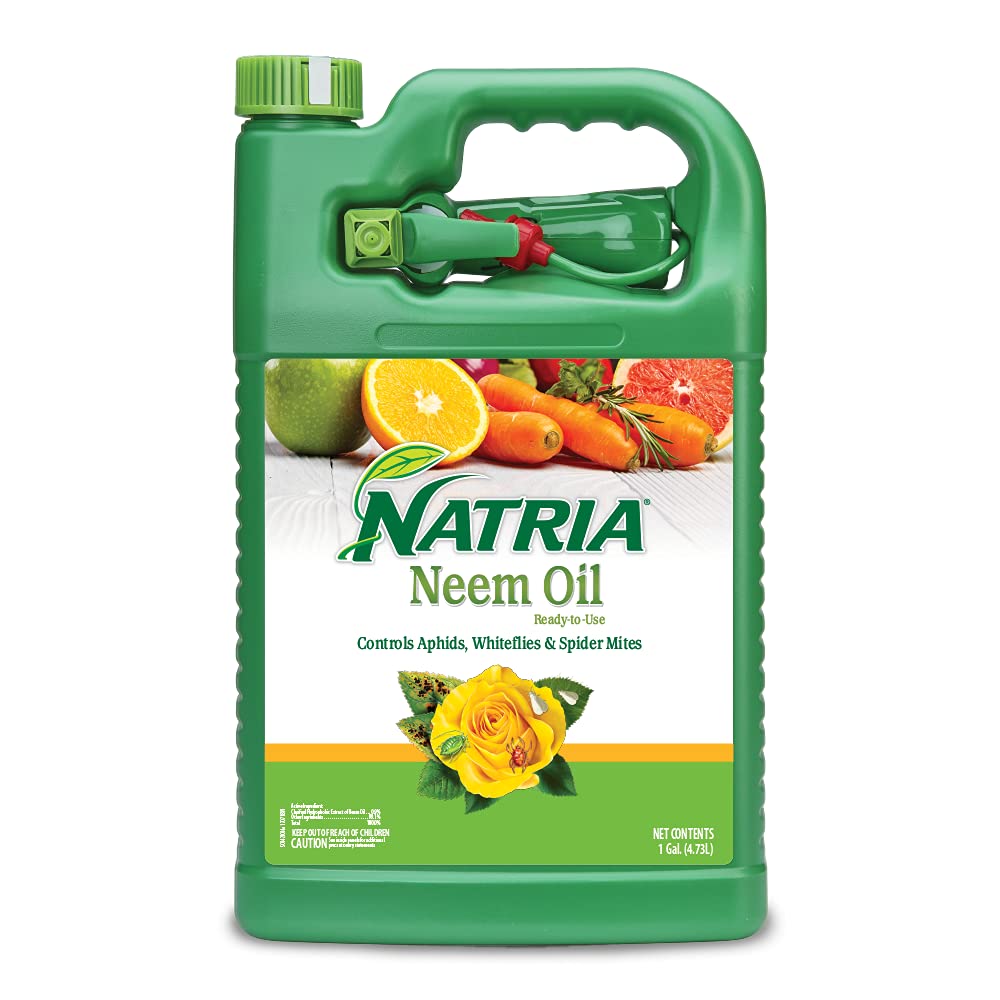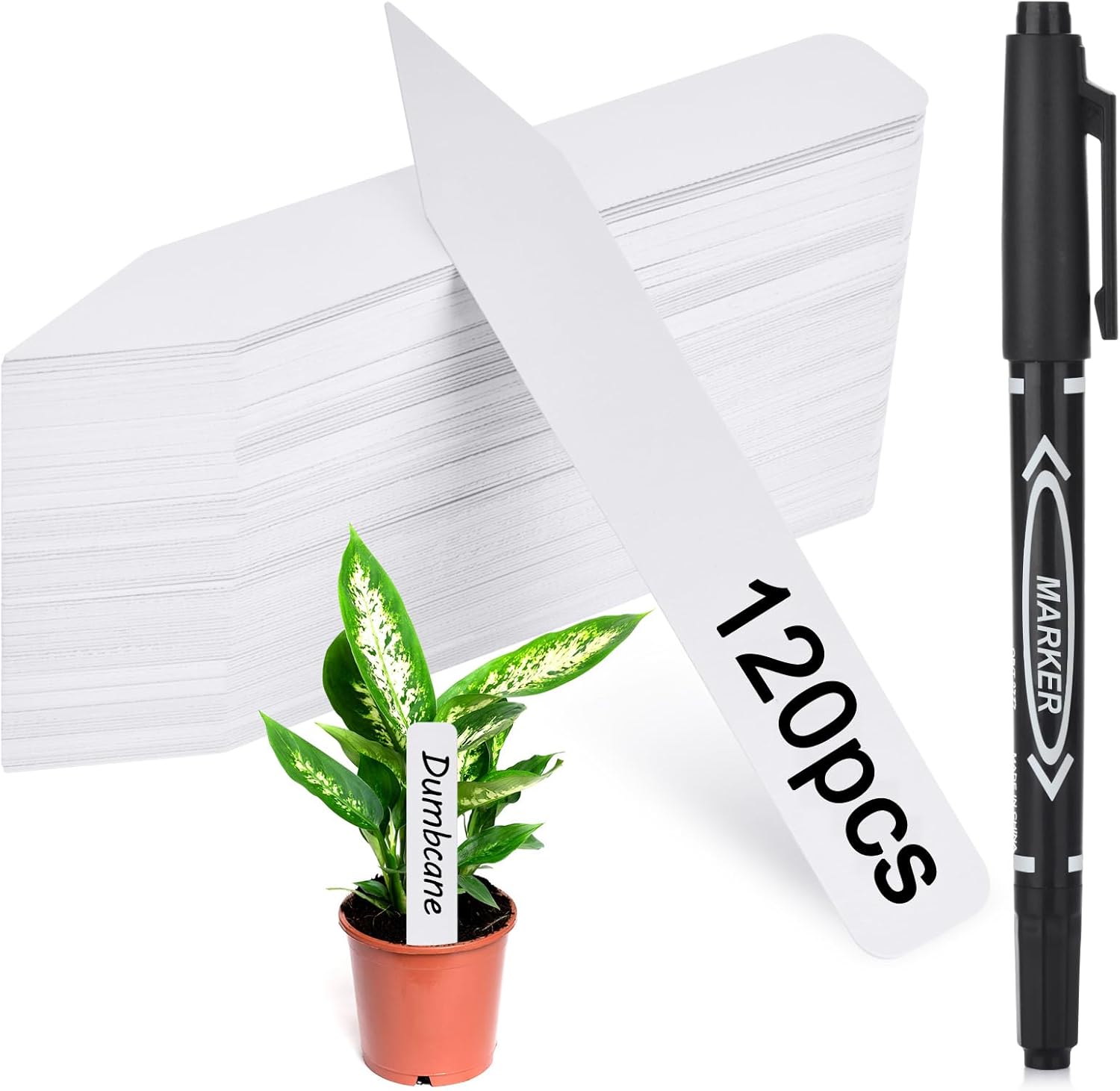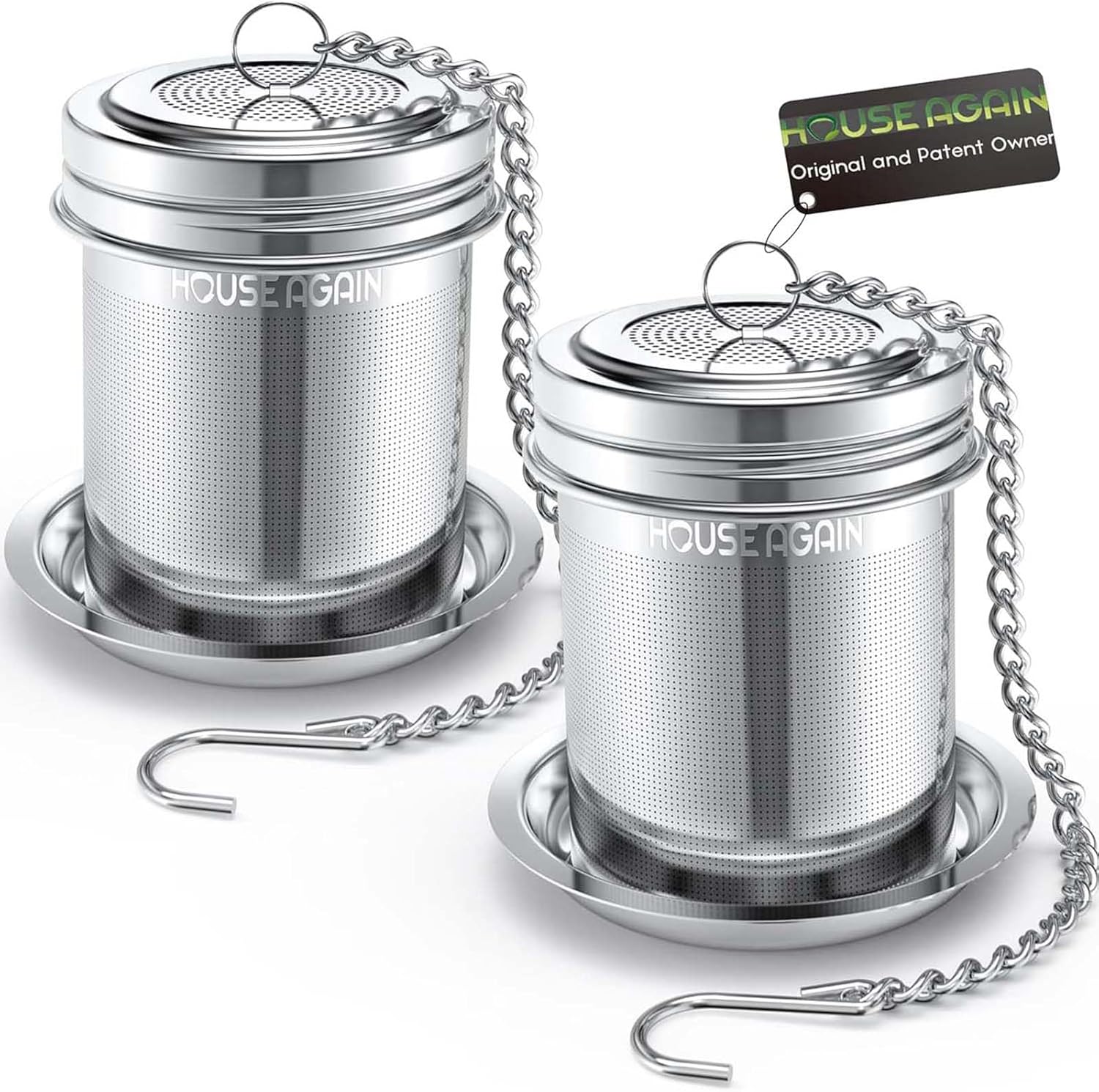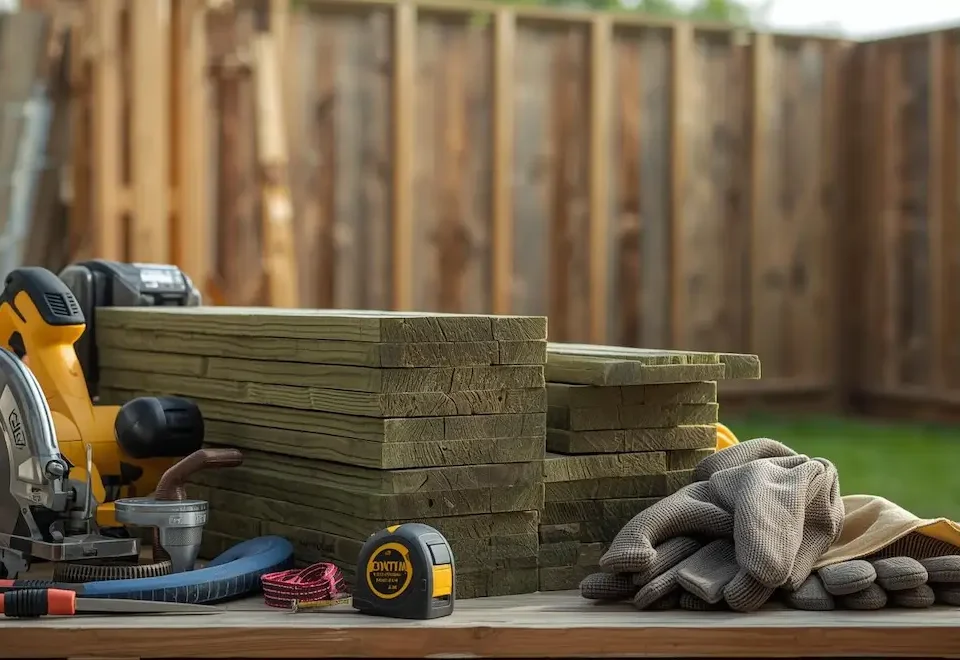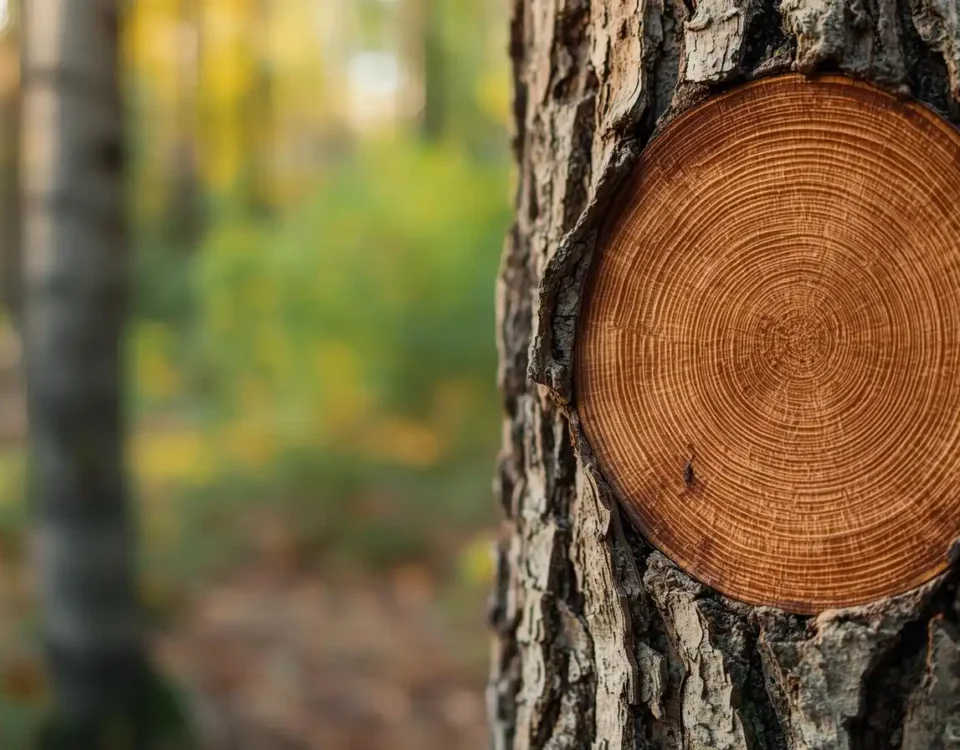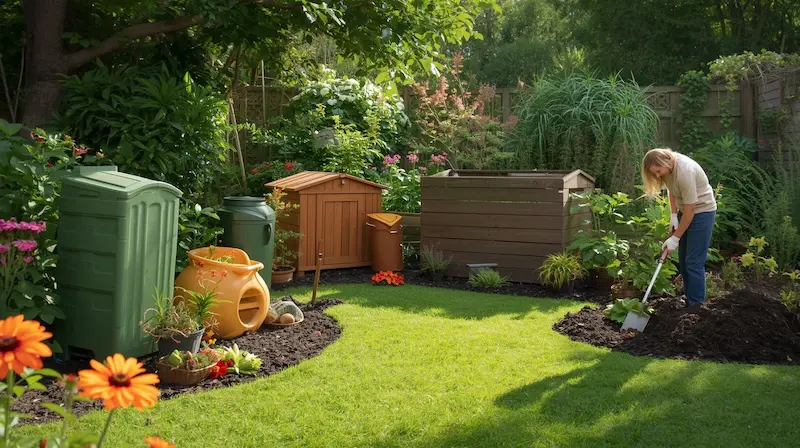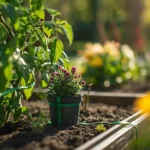
Money Tree Care Guide Braiding, Trunk Growth & Expert Tips
October 20, 2025
DeWalt vs. Milwaukee Guide to Choosing Your Power Tool Brand
October 22, 2025Introduction to the World of Hibiscus
Are you dreaming of vibrant, show-stopping blooms that turn your garden or living room into a tropical paradise, but feel overwhelmed by the idea of keeping them healthy? You’re not alone. Many gardeners fall in love with the beauty of hibiscus only to watch their plants struggle, with wilting leaves, stubborn buds that refuse to open, or unexpected pest problems. It can be frustrating when you give time and care, yet the results don’t match your vision.
Now, picture this instead: a lush garden filled with radiant hibiscus flowers in shades of red, pink, yellow, and white, each bloom more stunning than the last. Imagine sipping a refreshing cup of homemade hibiscus tea, rich in flavor and health benefits, while admiring your thriving plants. Whether you want to brighten your outdoor space, grow a stunning indoor plant, or explore its culinary and wellness uses, this guide will walk you through everything you need to know.
Here, you’ll learn how to confidently identify, plant, and care for hibiscus so it flourishes in any environment. From understanding its unique growth needs to mastering watering and pruning techniques, you’ll discover how simple and rewarding hibiscus care can be. Get ready to unlock the full potential of this extraordinary plant, one that’s as beautiful as it is beneficial.
Exploring Hibiscus Varieties: Tropical vs. Hardy
Hibiscus plants come in two main types, tropical and hardy, each offering distinct beauty, growth habits, and care needs. Understanding the differences between them is key to choosing the right variety for your climate and lifestyle. Let’s break down what sets them apart and how you can find the perfect fit for your garden.
Understanding the Fundamental Differences
Tropical Hibiscus (Hibiscus rosa-sinensis)
Tropical hibiscus is the showstopper of the hibiscus world. Known for its large, vividly colored flowers and glossy, deep-green leaves, this variety thrives in warm, humid conditions. It’s native to tropical and subtropical regions and struggles in cold weather.
- Characteristics: Produces big, dramatic flowers in bright colors such as red, orange, pink, and yellow. It’s tender and sensitive to cold, typically grown as an annual in cooler climates or overwintered indoors.
- Typical Appearance: Shiny, dark-green leaves with smooth edges. Flowers can be single, double, or ruffled, often lasting only a day but blooming continuously in warm conditions.
Hardy Hibiscus (Hibiscus moscheutos, Hibiscus syriacus – Rose of Sharon)
Hardy hibiscus is a cold-resistant cousin of the tropical variety. It’s ideal for regions that experience frost, as it can survive freezing temperatures and regrow each year.
- Characteristics: Deciduous plants that die back in winter and return in spring. They tolerate cold weather well and often grow larger than tropical hibiscus.
- Typical Appearance: Leaves vary from smooth to lobed, depending on the species. Flowers are often larger than tropical hibiscus, appearing in shades of white, pink, red, or purple, with some varieties boasting blooms up to 10 inches wide.
Key Distinctions for Gardeners
|
Feature |
Tropical Hibiscus |
Hardy Hibiscus |
|
Growth Habit & Size |
Evergreen shrub in warm climates, typically 3–10 ft tall; great for containers or hedges. |
Deciduous perennial or shrub, 3–8 ft tall; ideal for garden borders. |
|
Bloom Period & Flower Longevity |
Nearly year-round in warm climates; each bloom lasts 1–2 days, but blooms continuously. |
Blooms in mid-to-late summer; flowers last 1 day but appear in succession for weeks. |
|
Cold Tolerance & Hardiness Zones |
Sensitive to frost; best in USDA zones 9–11 or indoors in cooler areas. |
Cold-hardy; thrives in USDA zones 4–9 depending on the species. |
|
Watering & Soil |
Prefers moist, well-draining soil; avoid soggy conditions. |
Needs evenly moist, rich soil; tolerates more moisture than tropical types. |
|
Light Requirements |
Requires full sun (6+ hours daily) to bloom well. |
Prefers full sun but tolerates partial shade in hot climates. |
|
Pruning & Maintenance |
Light pruning throughout the year to maintain shape and encourage new blooms. |
Prune in early spring to remove old stems and encourage fresh growth. |
According to horticultural experts at Gardenia.net and Proven Winners, tropical hibiscus performs best when kept above 60°F (15°C), while hardy varieties like Hibiscus moscheutos can endure winter frost down to –20°F (–29°C).
Choosing the Right Hibiscus for Your Garden
Selecting the best hibiscus depends on your climate, available space, and design goals.
- Assess Your Climate and Hardiness Zone
- Warm, frost-free areas: Go for tropical hibiscus.
- Regions with cold winters: Hardy hibiscus is the better option.
- Warm, frost-free areas: Go for tropical hibiscus.
- Consider Available Space
- Limited space or container gardening? Choose tropical varieties; they thrive in pots and can be moved indoors when temperatures drop.
- Large garden beds or perennial borders? Hardy types like Luna or Summerific series work beautifully.
- Limited space or container gardening? Choose tropical varieties; they thrive in pots and can be moved indoors when temperatures drop.
- Desired Aesthetic and Flower Characteristics
- Prefer bold, exotic colors with glossy foliage? Tropical is your match.
- Want oversized blooms with classic pinks, reds, and whites? Hardy hibiscus delivers that dramatic flair.
- Prefer bold, exotic colors with glossy foliage? Tropical is your match.
- Interactive Variety Selector Idea
Picture a simple decision guide:
- “What’s your lowest winter temperature?”
- “Do you want to move plants indoors for winter?”
- “Are you after tropical colors or classic garden hues?”
Based on your answers, you’d land on a hibiscus type that suits both your space and climate.
- “What’s your lowest winter temperature?”
Popular Hibiscus Varieties Overview
|
Variety Name |
Type |
Flower Color |
Bloom Size |
Mature Size |
Hardiness Zone |
Key Feature / Attribute |
|
‘Hawaiian Punch’ |
Tropical |
Red, Orange, Yellow |
4–6 in |
3–5 ft (90–150 cm) |
9–11 |
Multi-colored blooms; classic tropical look |
|
‘Fifth Dimension’ |
Tropical |
Purple, Pink, Blue |
5–7 in |
4–6 ft (120–180 cm) |
9–11 |
Striking color shifts as blooms age |
|
‘Luna Pink Swirl’ |
Hardy |
Pink with deeper pink eye |
8–10 in |
3–4 ft (90–120 cm) |
4–9 |
Dinner-plate-sized flowers; compact growth |
|
‘Summerific Holy Grail’ |
Hardy |
Deep Red |
8–9 in |
4–5 ft (120–150 cm) |
4–9 |
Dark foliage with rich, velvety blooms |
|
‘Copper King’ |
Hardy |
White with red eye |
10–12 in |
4–6 ft (120–180 cm) |
4–9 |
Unique copper-tinged foliage; massive flowers |
|
‘Rose of Sharon’ (various cultivars) |
Hardy |
White, Pink, Purple, Blue |
4–6 in |
8–12 ft (2.4–3.6 m) |
5–9 |
Upright shrub; blooms late summer; low maintenance |
|
‘El Capitolio’ |
Tropical |
Red with a white center |
4–5 in |
5–8 ft (150–240 cm) |
9–11 |
Distinctive pinwheel-shaped flowers |
|
‘Luna Red’ |
Hardy |
Deep Red |
8–10 in |
3–4 ft (90–120 cm) |
4–9 |
Compact size; heavy bloomer |
|
‘Painted Lady’ |
Tropical |
Pink and Red Blend |
5–6 in |
4–6 ft (120–180 cm) |
9–11 |
Vintage favorite; reliable flowering indoors or out |
|
‘Starry Starry Night’ |
Hardy |
Pink with dark eyes |
8–9 in |
3–4 ft (90–120 cm) |
4–9 |
Compact; deep purple foliage; high contrast flowers |
Bloom size and height are averages and can vary based on growing conditions.
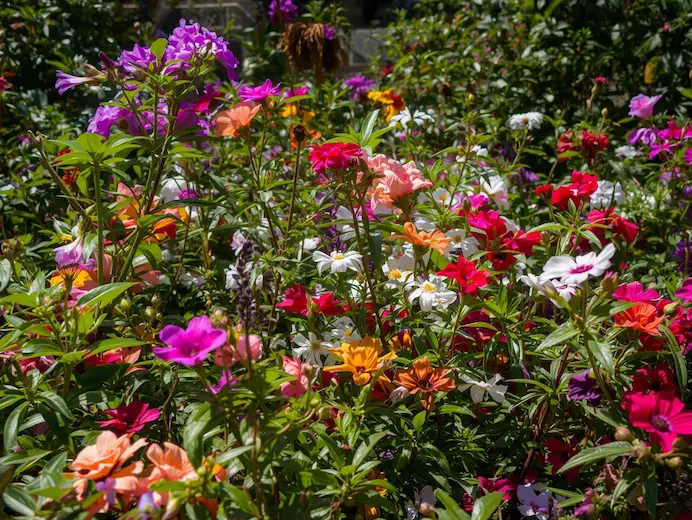
Essential Growing Conditions for Thriving Hibiscus
Growing hibiscus successfully depends on recreating the right balance of light, soil, temperature, and moisture that these tropical and hardy beauties naturally thrive in. Whether you’re nurturing them outdoors or bringing their vibrant blooms indoors, understanding their environmental needs makes all the difference between a struggling plant and a show-stopping display.
Sunlight Requirements
Hibiscus plants are sun-lovers, and light plays a direct role in how well they bloom.
Optimal Sunlight for Blooms: Aim for at least 6 hours of direct sunlight each day. Tropical hibiscus, in particular, depend on ample sunlight to produce their signature large, colorful flowers. Hardy hibiscus can tolerate slightly less but still performs best in bright, sunny spots.
Adjusting for Intense Climates: In regions where summers are extremely hot, provide partial shade during the afternoon to protect the plant from scorching. A spot that receives morning sun and filtered afternoon light is ideal for tropical varieties.
Expert Tip: Ensure your hibiscus receives at least 6 hours of direct sunlight daily for maximum flowering, particularly for tropical varieties. If you notice fewer blooms, leggy growth, or pale leaves, your plant likely needs more sun.
Soil Requirements
Hibiscus roots require oxygen and proper drainage to stay healthy. Dense, compacted soil can lead to rot and poor growth.
Preferred Soil Types: Use well-draining soil enriched with organic matter such as compost or leaf mold. A sandy loam mix is ideal.
Ideal pH Range: Hibiscus prefers soil that is slightly acidic to neutral (6.0–7.0). Maintaining this range helps the plant absorb essential nutrients like iron and magnesium, preventing yellow leaves.
Product Recommendations:
- High-Quality Potting Mix & Soil Amendments: Look for potting mixes formulated for tropical or flowering plants. Add perlite or coarse sand to improve aeration and drainage.
- pH Testing Kit: Regularly check your soil’s acidity with a simple pH testing kit to ensure it stays in the optimal range.
Temperature and Humidity
Hibiscus plants are sensitive to temperature swings, and knowing the difference between tropical and hardy types is key.
Tropical Hibiscus: Thrives in temperatures between 60°F–90°F (15°C–32°C). They are not frost-tolerant and should be brought indoors or protected when temperatures drop below 50°F (10°C).
Hardy Hibiscus: More resilient, these can survive winter temperatures as low as -20°F (-29°C), depending on the species. They die back in winter but return vigorously in spring.
Humidity Needs: Tropical hibiscus appreciates moderate to high humidity levels (50–70%). In dry indoor environments, use a humidifier or place a tray of water near the plant to increase ambient moisture.
Container vs. In-Ground Planting
Choosing between container growing and in-ground planting depends on your climate, available space, and lifestyle.
Container Planting: Ideal for tropical hibiscus in cooler regions. Containers allow you to move plants indoors during winter or extreme heat. Use large pots with good drainage holes; container size directly affects root health and flower production.
Expert Tip: Container Size Matters for Tropicals: Use a pot at least 16–18 inches (40–45 cm) in diameter for mature tropical hibiscus to give the roots room to spread. Cramped roots can limit blooms and stunt growth.
In-Ground Planting: Best for hardy hibiscus, which can handle cold winters. Choose a sunny, open area with rich, loamy soil and ensure consistent watering, especially during their active growing season.
Mastering Hibiscus Indoors
If you dream of year-round hibiscus blooms, growing them indoors can be both rewarding and manageable with the right setup.
Choosing the Right Pot and Location: Select a lightweight but sturdy pot with drainage holes and position it near a south- or west-facing window for maximum sunlight. Rotate the plant every few weeks so all sides receive equal light exposure.
Addressing Light and Humidity Challenges: Indoor environments can often be too dry or dim. If natural light is limited, supplement with a full-spectrum grow light for 10–12 hours daily. Maintain humidity by misting the plant or using a pebble tray.
Common Indoor Pest Prevention: Watch for aphids, spider mites, and whiteflies, which thrive in warm, dry conditions. Wipe leaves occasionally with a damp cloth and use neem oil spray or insecticidal soap if pests appear.
Miracle-Gro Potting Mix, For Container Plants, Flowers, Vegetables, Shrubs, Annuals, Perennials, Feeds up to 6 Months, 1 cu. ft., 2-pack
Experience vibrant, thriving plants with Miracle-Gro Potting Mix, the trusted choice for gardeners who want more color and faster growth. This premium potting soil feeds your plants for up to 6 months, delivering consistent nutrients that help produce twice as big plants compared to unfed ones. Whether you’re growing flowers, vegetables, or decorative shrubs, this mix ensures strong root development and lasting moisture control.
Perfect for indoor and outdoor containers, the lightweight, nutrient-rich formula supports healthy blooms and lush foliage all season long. Each 1 cu. ft. bag fills about two 12-inch pots, making this 2-pack bundle a convenient and cost-effective choice for home gardeners.
Bring your garden to life with Miracle-Gro, growing success is guaranteed.
Comprehensive Care for Vibrant Hibiscus Blooms
Once your hibiscus is planted in the right spot, ongoing care becomes the key to maintaining those bold, tropical flowers and glossy green leaves. With attention to watering, feeding, pruning, and pest control, your hibiscus will reward you with lush growth and abundant blooms season after season.
Watering Techniques
Hibiscus plants love moisture but dislike soggy soil. Getting the balance right ensures a healthy root system and long-lasting flowers.
Expert Tip: Deep, Infrequent Watering
Water your hibiscus deeply until excess water drains from the bottom of the pot or garden bed. Then allow the top 1–2 inches of soil to dry out before watering again. This encourages stronger roots and helps prevent root rot, a common issue when the soil stays too wet.
Seasonal Adjustments:
- Spring and Summer (Active Growth): Water more frequently, especially during hot, dry weather. Tropical hibiscus may need daily watering in containers.
- Fall and Winter (Dormancy): Reduce watering, allowing the soil to dry slightly longer between waterings. Overwatering in cooler months can lead to fungal issues.
Signs of Watering Issues:
- Under watering: Drooping leaves, dry soil, and premature bud drop.
- Over watering: Yellowing leaves, soft stems, and moldy soil surface.
Keep your hibiscus evenly moist without letting it sit in water. Good drainage is essential for both tropical and hardy varieties.
Fertilization Strategies
Feeding hibiscus correctly supports steady growth and frequent flowering. These plants are heavy feeders and benefit from a consistent nutrition plan.
Expert Tip: Fertilize Actively Growing Plants
During the growing season, fertilize every 2–4 weeks using a balanced, slow-release or water-soluble fertilizer formulated for flowering plants. Once the weather cools and the plant enters dormancy, reduce feeding to once every 6–8 weeks or stop altogether.
Types of Fertilizers:
- Slow-Release Granular: Ideal for busy gardeners; provides nutrients over time.
- Water-Soluble: Delivers quick results but requires more frequent applications.
- Organic Options: Fish emulsion or compost tea can enrich the soil naturally.
Avoiding Over-Fertilization:
Too much fertilizer can cause leaf burn or reduce flower production. Always follow label directions and ensure the soil stays moist before and after feeding.
Product Recommendation:
Choose a slow-release or water-soluble fertilizer specifically made for hibiscus or flowering plants. Look for one with an N-P-K ratio around 10-10-10 or 17-5-24 to promote balanced growth and abundant blooms.
Pruning for Health and Shape
Pruning not only maintains your hibiscus’s size but also encourages fresh growth and more flowers.
Expert Tip: Strategic Winter Pruning
Perform major pruning in late winter or early spring before new growth begins. Remove dead or damaged branches, shape the plant, and cut back leggy stems to encourage a dense, bushy structure.
Expert Tip: Consistent Deadheading
Regularly remove faded or wilted flowers to prevent seed formation. This encourages the plant to redirect energy into producing new blooms rather than seeds, extending the blooming period.
Steps for Shaping and Size Control:
- Identify weak or crossing branches and remove them.
- Trim up to one-third of the plant’s height to control size.
- Make clean cuts just above a leaf node to stimulate new shoots.
- Sterilize pruning shears between cuts to avoid disease spread.
Pruning for Increased Bloom Production:
New flowers typically form on new wood, so light pruning throughout the growing season can boost flowering frequency.
Product Recommendation:
Use bypass pruning shears for clean cuts that promote quicker healing and minimize damage to the stems.
Fiskars Bypass Pruning Shears, 5/8-Inch Cut Capacity Garden Clippers, Gardening Scissors with Sharp, Rust Resistant Steel Blade
Experience professional-level precision with the Fiskars Bypass Pruning Shears, the must-have tool for gardeners who value performance and comfort. Designed with hardened steel blades, these shears deliver clean, accurate cuts that help plants heal faster and stay healthy.
The low-friction coating ensures smoother cutting action, reduces sap build-up, and offers long-lasting rust protection. With its non-slip ergonomic handle and easy-open lock, you’ll enjoy better grip and safety during use. The self-cleaning sap groove keeps the blades clear for consistent performance.
Whether trimming flowers, pruning herbs, or shaping shrubs, Fiskars’ innovative design gives you maximum control, durability, and ease of use all backed by a Lifetime Warranty.
Bring precision and comfort to every cut with Fiskars, your garden is always in good hands.
Pest and Disease Management
Healthy hibiscus plants are resilient, but pests and diseases can still appear, especially in warm or humid conditions.
Common Hibiscus Pests:
- Aphids: Small, green or black insects that cluster on new growth.
- Spider Mites: Tiny pests that cause speckled leaves and webbing.
- Whiteflies: Small, white flying insects found on leaf undersides.
- Mealybugs: Cotton-like pests on stems and leaf joints.
Expert Tip: Early Pest Detection
Inspect your hibiscus regularly, especially under the leaves, to spot early pest infestations. The sooner you notice, the easier they are to manage.
Organic Treatments:
- Spray neem oil or insecticidal soap weekly until pests disappear.
- Rinse leaves with water to remove dust and insects.
- Encourage beneficial insects like ladybugs and lacewings.
Common Diseases:
- Fungal Leaf Spots: Brown or yellow patches caused by humidity.
- Root Rot: From overwatering or poor drainage.
- Powdery Mildew: White, powdery coating on leaves.
Treatment Options:
Improve air circulation, avoid overhead watering, and use fungicides only when necessary. Remove infected leaves promptly to prevent spreading.
Product Recommendation:
Use organic pest control sprays such as neem oil or insecticidal soap for safe, effective management of most hibiscus pests.
NATRIA Neem Oil Spray for Plants, Ready-to-Use, 1 Gal
All-in-One Garden Protection: Natria Neem Oil Spray controls a wide range of pests and fungal diseases ideal for both indoor and outdoor plants, including vegetables, roses, and ornamentals.
• Natural Pest Control Solution: Effectively kills aphids, spider mites, whiteflies, and other listed insects while remaining gentle on your plants. Perfect for use as a plant bug spray or leaf treatment.
• Dual Action Formula: Works as both an insecticide and fungicide, helping prevent and treat blackspot, powdery mildew, rust, and botrytis keeping your plants vibrant and healthy.
• Easy & Ready to Use: Convenient 1-gallon ready-to-use spray requires no mixing. Simply spray directly on affected areas for quick, effective results safe to use up to the day of harvest.
• Year-Round Application: Use in spring, summer, or fall to protect plants throughout the growing season. Formulated with Clarified Hydrophobic Extract of Neem Oil (0.9%) for consistent, reliable performance.
With its dual insecticide and fungicide action, this plant care essential simplifies your routine no mixing, no measuring, and no stress. Whether you’re growing vegetables, ornamentals, or roses, Natria Neem Oil Spray keeps your plants healthy, pest-free, and thriving all season long.
Active Ingredient: Clarified Hydrophobic Extract of Neem Oil (0.9%)
Seasonal Care Calendar
To keep your hibiscus thriving year-round, follow a seasonal rhythm:
|
Season |
Key Tasks |
|
Spring |
Prune, repot if needed, and begin regular fertilizing and watering. |
|
Summer |
Maintain watering schedule, deadhead regularly, and inspect for pests. |
|
Fall |
Reduce feeding, prepare to bring tropicals indoors before frost. |
|
Winter |
Light watering only, prune hardy varieties, rest tropicals indoors. |
This routine can be adjusted based on your hardiness zone and local weather conditions.
Encouraging Abundant Blooms
The secret to continuous flowering lies in balanced care.
- Optimize Light: Ensure full sun exposure for at least six hours daily.
- Control Water and Nutrients: Keep soil moist but not soggy, and feed regularly during growth periods.
- Prune and Deadhead Consistently: Stimulate new buds by removing old blooms and trimming leggy growth.
- Manage Stressors: Protect plants from temperature swings, overwatering, and nutrient deficiencies to maintain a steady blooming cycle.
With thoughtful, consistent care, your hibiscus can produce vibrant, tropical flowers that last from early summer until the first frost.
Hibiscus Harmony: Companion Planting for a Thriving Garden
Creating a thriving hibiscus garden isn’t just about caring for the plants themselves; it’s also about what grows around them. Companion planting brings together species that naturally benefit one another, helping your hibiscus stay healthy, pest-free, and visually stunning. With the right mix of neighbors, you can turn a simple planting area into a living ecosystem that supports growth, color, and biodiversity.
Understanding Companion Planting Principles
Companion planting is the practice of growing plants together that enhance each other’s growth or offer mutual protection. For hibiscus, which thrives in sunny, moderately moist, and nutrient-rich conditions, pairing it with compatible plants can lead to noticeable improvements in overall health and flower production.
Benefits of Companion Planting:
- Pest Deterrence: Certain plants naturally repel common hibiscus pests like aphids, whiteflies, and spider mites.
- Attracting Beneficial Insects: Others draw in pollinators or predatory insects that help control harmful pests.
- Improving Soil Health: Some companions, particularly legumes, enrich the soil with nutrients like nitrogen.
- Aesthetic Appeal: Complementary plants can enhance the tropical look and make the garden more visually balanced.
Factors to Consider:
Before you start pairing, remember to match light, water, and soil needs. Hibiscus loves full sun, consistent moisture, and well-draining soil, so companions should share these conditions. Avoid plants that thrive in shade or overly dry environments.
Ideal Companions for Hibiscus
The right companions can enhance both the health and beauty of your hibiscus garden. Below are some excellent choices based on their role in a balanced ecosystem.
Pest Deterrents:
- Marigolds: Known for their strong scent, marigolds help deter aphids, whiteflies, and nematodes while adding bright color around hibiscus beds.
- Nasturtiums: These serve as “trap crops,” attracting aphids away from hibiscus. Their edible flowers also bring a cheerful, cascading look.
- Garlic: The natural sulfur compounds in garlic repel insects and can even help prevent fungal infections in the soil.
Beneficial Insect Attractors:
- Dill: Draws ladybugs and hoverflies, both of which feed on aphids and other soft-bodied pests.
- Fennel: Attracts lacewings and parasitic wasps that naturally manage pest populations.
- Cosmos: Their open flowers invite bees, butterflies, and hoverflies, boosting pollination for hibiscus blooms.
Soil Enhancers:
- Legumes (such as beans or clover): Fix nitrogen into the soil, helping support leafy hibiscus growth. However, ensure they don’t compete too closely for sunlight or space; plant them slightly apart.
Aesthetically Pleasing Companions:
- Lantana: Its bright, multicolored flowers pair beautifully with hibiscus, and both attract pollinators.
- Salvia: The upright blooms contrast nicely with hibiscus flowers and provide color through multiple seasons.
- Pentas: With star-shaped clusters of red, pink, or white blooms, pentas complement hibiscus and are hummingbird favorites.
These combinations not only make your garden more dynamic but also create a self-sustaining environment that requires less intervention over time.
Plants to Avoid Near Hibiscus
While many plants coexist happily with hibiscus, a few can cause problems due to root competition or shared vulnerabilities.
Avoid:
- Aggressive Growers: Plants like mint or bamboo spread quickly and can overwhelm hibiscus roots.
- Heavy Feeders: Roses and large shrubs may compete for nutrients, reducing flower production.
- Pest Magnets: Plants such as okra or cotton, which attract whiteflies and aphids, should be kept away to avoid infestations spreading.
Maintaining a small buffer zone between hibiscus and potentially competitive species helps ensure each plant gets what it needs to thrive.
Hibiscus: The Eco-Gardener’s Choice
Beyond their stunning flowers, hibiscus plants play an important role in supporting local ecosystems. Their bright, nectar-rich blooms attract a variety of pollinators, including hummingbirds, bees, and butterflies, making them a cornerstone of a healthy, balanced garden.
Growing hibiscus alongside other pollinator-friendly plants transforms your outdoor space into a buzzing, vibrant habitat. You’ll not only enjoy breathtaking color but also contribute to biodiversity and pollinator conservation.
In addition, hibiscus isn’t just beautiful, it’s edible and versatile. The petals of many varieties, especially Hibiscus sabdariffa (Roselle), are used to make herbal teas, syrups, and natural food dyes. This makes hibiscus both a visual and functional treasure for eco-conscious gardeners.
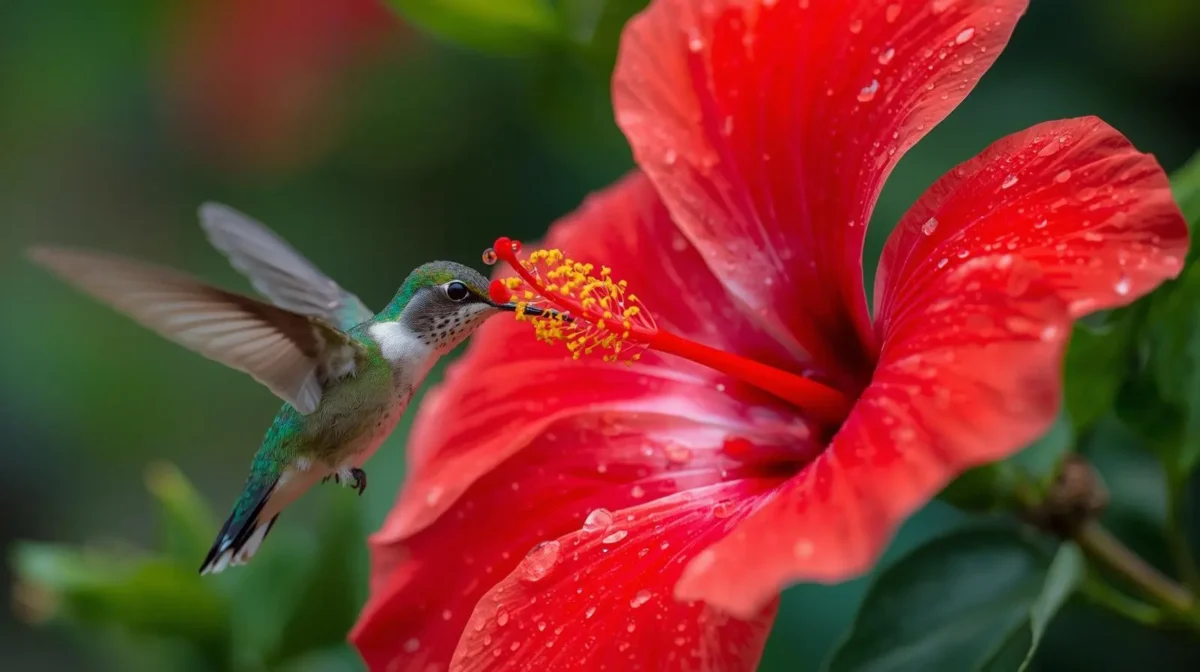
Overwintering Hibiscus: Protecting Your Plants Through Colder Months
As the temperatures start to drop, hibiscus care changes dramatically. These tropical beauties can struggle in cool weather, but with a few key adjustments, you can protect them through winter and set them up for a strong comeback in spring. Whether you grow hardy hibiscus in your garden or tropical varieties in containers, proper overwintering makes all the difference between a plant that thrives year after year and one that fades away with the frost.
Preparing Hardy Hibiscus for Winter
Hardy hibiscus (Hibiscus moscheutos and Hibiscus syriacus, also known as Rose of Sharon*) are naturally adapted to colder climates, but they still appreciate a little help as the seasons change.
Expert Tip: Mulch for Hardy Hibiscus
Before the ground freezes, apply a 2–4 inch layer of organic mulch (such as shredded bark, leaves, or compost) around the base of your hardy hibiscus. This helps regulate soil temperature, retain moisture, and suppress winter weeds. It also protects the root crown from extreme temperature fluctuations that can cause stress or frost damage.
Pruning Before Frost:
In most regions, wait until after the first light frost before cutting back hardy hibiscus. Trim stems down to about 6 inches above the ground. This helps prevent disease and encourages a tidy garden appearance through winter. Avoid pruning too early, as the remaining foliage can offer some protection against early cold snaps.
Winter Protection Methods:
In particularly harsh climates, add an extra layer of protection by wrapping the plant base in burlap or frost cloth. You can also use garden stakes to build a small wind barrier around the plant. These methods help reduce exposure to drying winds and fluctuating temperatures.
Come spring, remove mulch and coverings gradually once the soil begins to warm, allowing new shoots to emerge naturally.
Bringing Tropical Hibiscus Indoors
Tropical hibiscus (Hibiscus rosa-sinensis) cannot tolerate frost and must be brought indoors before nighttime temperatures dip below 50°F (10°C).
Pre-Winter Inspection and Pest Treatment:
Before bringing your hibiscus inside, scrutinize it for pests such as aphids, whiteflies, or spider mites. Wash the leaves with a gentle stream of water or wipe them with a damp cloth. If needed, apply neem oil or insecticidal soap to prevent pest infestations indoors.
Acclimatizing Gradually (Hardening Off in Reverse):
Just as you gradually introduce plants to the outdoors in spring, you should also acclimate them to indoor conditions before winter. Start by moving your hibiscus to a shaded outdoor area for a few days, reducing sun exposure and watering slightly. Then, transition it indoors where the lighting and humidity differ significantly.
Expert Tip: Acclimatize Gradually
When spring arrives, reverse the process. Gradually expose your tropical hibiscus to outdoor conditions over 1–2 weeks, increasing its time in the sun each day. This helps prevent leaf scorch and transplant shock when temperatures rise again.
Choosing the Right Indoor Location
Once inside, location is everything for tropical hibiscus survival.
Light: Place your plant in the brightest spot available, ideally near a south- or west-facing window. Hibiscus need at least 4–6 hours of bright light each day to stay healthy through winter. If natural light is limited, supplement with grow lights to prevent leaf drop.
Temperature: Keep the indoor temperature between 60–75°F (15–24°C). Avoid placing the plant near heating vents or cold drafts, as sudden temperature changes can stress it.
Humidity: Indoor heating often dries the air, so use a humidifier or place the pot on a tray of water and pebbles to maintain consistent humidity levels around the plant.
Adjusting Winter Care
As daylight shortens and growth slows, tropical hibiscus enter a semi-dormant phase. They require less frequent watering and no active feeding.
- Watering: Allow the top inch of soil to dry out between waterings. Overwatering during winter dormancy can cause root rot.
- Fertilization: Suspend regular feeding until late winter or early spring when new growth appears. Resume fertilizing every 2–4 weeks during the growing season.
Leaf Drop: Don’t panic if some leaves yellow and fall off after moving indoors. The plant is adjusting to reduced light and humidity. Keep caring for it, and fresh growth will emerge in spring.
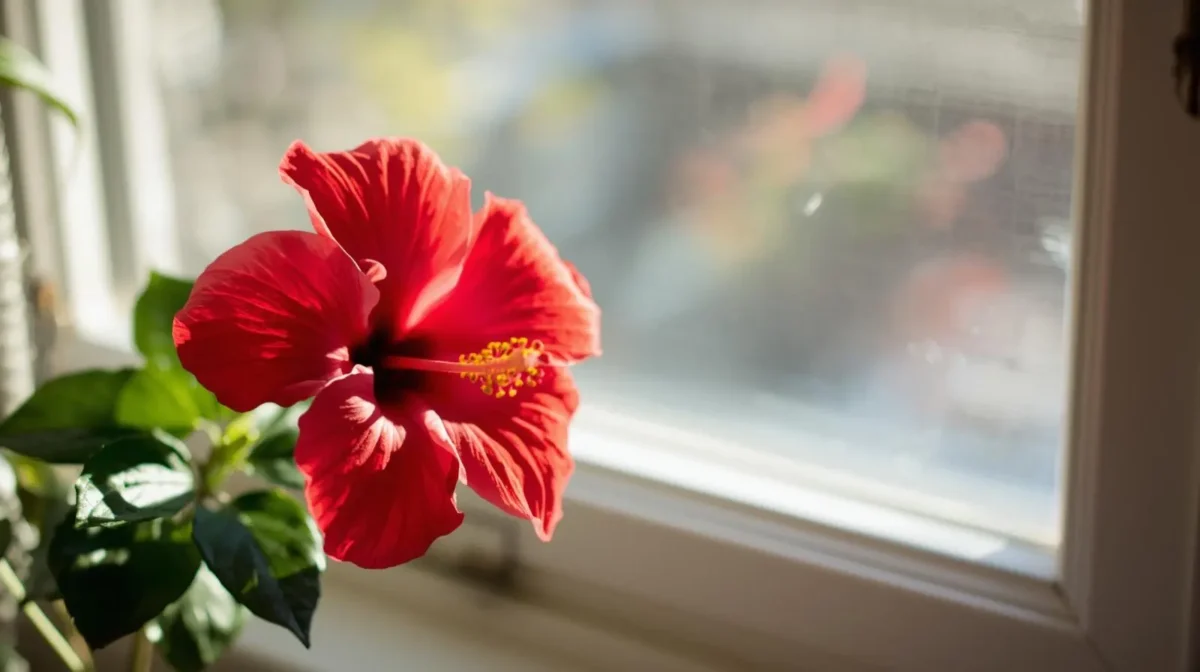
Dormancy vs. Active Winter Growth
Understanding your hibiscus’s natural rhythm is essential for successful overwintering.
- Hardy Hibiscus: These go fully dormant in winter, shedding their leaves completely. It’s normal for them to look lifeless through the colder months. The roots remain alive underground, storing energy for vigorous spring regrowth.
- Tropical Hibiscus: These enter a semi-dormant state, slowing growth but often retaining some foliage. With adequate light and warmth, a few blooms may still appear sporadically during winter, though at a slower pace.
Managing Expectations:
Don’t expect a winter flower show from your hibiscus. Instead, view this period as essential rest. Proper overwintering ensures your plants return stronger and more vibrant once the days lengthen and temperatures climb again.
Propagating Hibiscus: Expand Your Collection
Growing more hibiscus from your existing plants is both rewarding and practical. Whether you’re looking to fill your garden with colorful blooms or share plants with friends, propagation lets you do so at little cost. The process is simple once you understand the key techniques and timing.
Methods of Propagation
Hibiscus can be propagated in several ways, but the most common and reliable method is through stem cuttings. Growing from seed is possible, though it takes more time and patience to reach maturity.
From Cuttings (Most Common Method)
Expert Tip: Propagate from Semi-Hardwood Cuttings
The best time to take hibiscus cuttings is late spring to early summer, when stems are semi-hardwood, firm but still flexible. Avoid very young green shoots or old woody stems, as they root less successfully.
Step-by-Step Guide:
- Selecting Healthy Cuttings
Choose a branch that’s about 4–6 inches long with at least two or three leaf nodes. Make sure the cutting is disease-free and taken from a vigorous, flowering plant. - Preparing the Cuttings
Remove the leaves from the lower half of the stem to prevent moisture loss and rot. If your plant is in bloom, remove any flower buds to redirect energy toward root development. Dip the cut end into rooting hormone powder or gel to encourage quicker root formation. - Planting Medium and Environment
Use a light, well-draining medium such as a mix of peat moss and perlite or coconut coir and sand. Insert the cutting into the moist medium about one-third of its length. Keep the soil evenly moist but not soggy.
To maintain humidity, cover the pot with a plastic dome, bag, or cut bottle, creating a mini greenhouse effect. Place it in bright, indirect light and keep the temperature around 70–80°F (21–27°C). - Caring for New Cuttings
Check the soil moisture regularly and mist occasionally to maintain humidity. In about 4–8 weeks, roots should form. Once the roots are strong enough, transplant the young hibiscus into a larger pot or directly into the garden if conditions are warm.
From Seeds
While propagation by seeds takes longer, it can be a fun experiment, especially if you enjoy seeing unique color variations.
- Collecting and Preparing Seeds
After your hibiscus flowers fade, seed pods may develop. Allow them to dry on the plant, then harvest once they turn brown and brittle. Gently open the pods and remove the seeds.
To improve germination rates, nick the seed coat lightly with sandpaper and soak the seeds in warm water for a few hours before planting. - Sowing and Germination
Plant seeds in a seed-starting mix, about ¼ inch deep. Keep the medium moist and warm (around 75°F / 24°C). Covering the tray with clear plastic helps retain humidity. Germination may take 2–4 weeks, depending on the variety. - Caring for Seedlings
Once seedlings develop a few true leaves, transplant them into individual pots. Gradually introduce them to outdoor light and conditions before planting them in your garden.
Troubleshooting Propagation Issues
- Lack of Rooting:
If your cuttings fail to root, check for overly wet soil, low humidity, or poor-quality stems. Recut healthy stems and ensure your medium drains well. - Damping Off (Fungal Decay):
This occurs when humidity is too high and air circulation is poor. Prevent it by sterilizing pots and using clean tools. Avoid overwatering, and ensure your growing area has airflow.
If you’re struggling to keep track of multiple cuttings or seed varieties, labeling can help.
Product Recommendation: Plant Tags or Markers – Ideal for labeling hibiscus cuttings and seedlings with variety names or planting dates.
Health Benefits & Delightful Culinary Uses of Hibiscus
Hibiscus, especially Hibiscus sabdariffa (commonly called Roselle), isn’t just admired for its bright red blooms. It’s also widely used in herbal medicine and global cuisines for its rich flavor and proven health benefits. Backed by several scientific studies, hibiscus offers support for heart health, digestion, and overall wellness. Here’s a closer look at what research says, along with practical ways to enjoy it at home.
Plant Labels 120PCS, Darfukei Outdoor Waterproof Garden Markers, Plastic Nursery Seed Plant Tags with Bonus a Permanent Marking Pen, Gardening Gifts for Women Men
Keep your garden neat and organized with the Darfuke 120-Pack Plant Labels — a complete labeling solution for all your planting needs. Crafted from premium waterproof PVC, these durable markers withstand sun, rain, and soil moisture without fading or breaking.
Each tag provides ample writing space and comes with a permanent marker pen for easy labeling. Whether you’re growing herbs on your balcony, seedlings in trays, or vegetables in raised beds, these plant markers make identifying and tracking your plants effortless.
Reusable and long-lasting, the Darfuke Plant Label Set combines functionality and style — helping every gardener maintain a well-labeled, thriving garden year-round.
Health Benefits & Delightful Culinary Uses of Hibiscus
Hibiscus, especially Hibiscus sabdariffa (commonly called Roselle), isn’t just admired for its bright red blooms. It’s also widely used in herbal medicine and global cuisines for its rich flavor and proven health benefits. Backed by several scientific studies, hibiscus offers support for heart health, digestion, and overall wellness. Here’s a closer look at what research says, along with practical ways to enjoy it at home.
Scientifically Supported Health Benefits of Hibiscus
1. Blood Pressure Regulation
Multiple clinical studies confirm that hibiscus tea can help lower high blood pressure. A 2022 meta-analysis published in the Journal of Nutritional Biochemistry found that daily hibiscus tea significantly reduced both systolic and diastolic blood pressure in adults with mild hypertension.
Hibiscus works through natural diuretic and ACE-inhibiting properties, helping the body excrete excess sodium and relax blood vessels. However, if you’re already taking blood pressure medication, consult a doctor; hibiscus may amplify the effects.
2. Antioxidant Properties
Hibiscus calyces are rich in anthocyanins, the same plant pigments found in berries. These compounds protect cells from oxidative stress and inflammation. A 2021 study in Food Chemistry confirmed that hibiscus extract demonstrated high antioxidant activity, largely due to its anthocyanin and polyphenol content.
Regular consumption may support healthy aging and reduce the risk of chronic diseases linked to oxidative damage.
3. Cholesterol Management
Several studies suggest hibiscus can help maintain healthy cholesterol levels. In a 2025 review in Food Research International, hibiscus extract was shown to lower LDL (bad) cholesterol and increase HDL (good) cholesterol in individuals with metabolic syndrome. Its polyphenols and organic acids may enhance lipid metabolism and reduce fat accumulation in the liver.
4. Digestive Health
Research from ScienceDirect (2024) found that polysaccharides in hibiscus modulate gut microbiota and promote the production of short-chain fatty acids, which are beneficial for digestion and colon health. Traditionally, hibiscus tea has also been used as a mild digestive aid, helping relieve bloating and constipation.
5. Anti-inflammatory Effects
Hibiscus contains flavonoids and phenolic acids with measurable anti-inflammatory activity. A 2018 study published in Phytomedicine showed that hibiscus extract reduced inflammatory markers in animal models. This supports its potential role in soothing mild inflammation and supporting overall immune balance.
E-E-A-T Note:
All health information here is supported by peer-reviewed research, including studies indexed on PubMed and ScienceDirect (Ellis et al., 2022; Montalvo-González et al., 2022; Liu et al., 2024). Always consult a healthcare provider before using hibiscus therapeutically, especially if you are pregnant or taking medication.
DIY Hibiscus Tea Guide
Hibiscus tea is one of the most enjoyable and healthful ways to experience these benefits. Known as Agua de Jamaica in Latin America, this ruby-red drink can be enjoyed hot or cold.
Harvesting and Drying Hibiscus Flowers
- Best Time to Harvest: Pick calyces (the fleshy red sepals) right after the flower petals fall but before the seed pods harden.
- Drying Methods:
- Air Drying: Spread the calyces on a mesh tray in a shaded, well-ventilated area for several days.
- Dehydrator: Speeds up drying and ensures even results.
- Air Drying: Spread the calyces on a mesh tray in a shaded, well-ventilated area for several days.
Product Recommendation: Food Dehydrator – Ideal for preserving color and nutrients for culinary use.
COSORI Food Dehydrator for Jerky, 176°F Temperature Control, 5 Stainless Steel Trays Dryer Machine, 4 Presets, 48H Timer, for Dog Treats, Meat, Fruit.
Create healthy, homemade snacks with the COSORI Food Dehydrator Machine your all-in-one solution for drying fruits, vegetables, meats, and herbs. With precise temperature control (95–176°F) and 4 pre-set modes, you can craft flavorful jerky, crunchy apple chips, or creamy yogurt effortlessly.
The rear fan design ensures even airflow for consistent dehydration, while dishwasher-safe trays make cleanup quick and simple. Compact yet powerful, it fits neatly on your countertop without sacrificing capacity. Built from BPA-free materials with overheat protection, this dehydrator ensures safety, reliability, and long-term durability.
Whether you’re prepping jerky, preserving garden harvests, or making pet treats, the COSORI Dehydrator delivers professional-quality results at home.
Step-by-Step Tea Preparation
Hot Brew Method
- Boil 2 cups of water.
- Add 1 tablespoon of dried hibiscus calyces.
- Steep for 5–7 minutes.
- Strain and sweeten with honey if desired.
Cold Brew Method
- Add 2 tablespoons of dried hibiscus to 4 cups of cold water.
- Refrigerate for 8–12 hours.
- Strain and serve chilled over ice.
Enhance the flavor with mint, ginger, or a splash of lime for a refreshing twist.
Product Recommendation: Tea Infuser or Fine-Mesh Strainer – Useful for both hot and cold brewing.
Safe Consumption Guidelines
- Limit intake to 1–2 cups per day if you have low blood pressure, as hibiscus can slightly reduce it further.
- Avoid during pregnancy, as studies suggest it may stimulate menstruation or uterine activity.
- Individuals on anti hypertensive, diabetic, or diuretic medications should seek medical advice before use.
(Source: WebMD, 2025; Verywell Health, 2025.)
Creative Culinary Applications
Hibiscus is a chef’s dream ingredient, bright, tangy, and aromatic. It adds both flavor and visual appeal to sweet and savory dishes.
Hibiscus Syrup
- Recipe: Simmer 1 cup dried hibiscus with 2 cups water and 1 cup sugar for 10–15 minutes. Strain and cool.
- Uses: Drizzle over pancakes, mix into cocktails, or add to sparkling water for a natural pink soda.
Hibiscus Jam or Jelly
Boil 2 cups of dried hibiscus with 3 cups of water and 2 cups of sugar until thickened. Add pectin for a firmer set. Spread on toast or use as a glaze for desserts.
Hibiscus-Infused Desserts
Add concentrated hibiscus tea or syrup to sorbets, tarts, macarons, or panna cotta. The flower’s tartness balances creamy flavors beautifully.
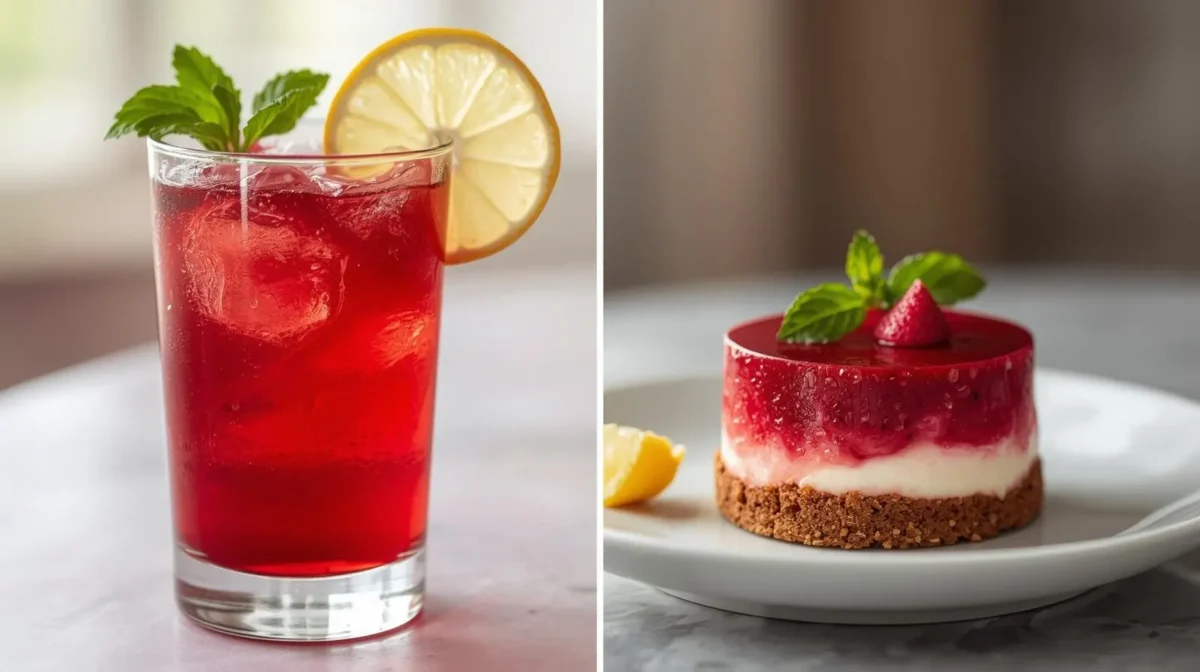
Types of Hibiscus for Culinary Use
Not all hibiscus species are edible.
- Best Choice: Hibiscus sabdariffa (Roselle) – Used globally for tea, jams, and syrups.
- Also Edible: Hibiscus rosa-sinensis petals, though they are milder and more decorative.
Avoid ornamental hybrids not labeled as edible, as some may contain substances not intended for consumption.
Beyond the Bloom: DIY Hibiscus Home & Skincare Remedies
Hibiscus isn’t just a garden showstopper or a flavorful tea; it’s also a versatile ingredient for home and personal care. Packed with natural acids, antioxidants, and vibrant pigments, hibiscus can be used in cleaning, crafting, and skincare. With some simple tools and a few ingredients, you can transform this plant into practical, beautiful, and healthful remedies.
DIY Hibiscus Home Remedies
Hibiscus can enhance your living space in subtle, natural ways.
- Hibiscus Potpourri
- Benefits: Naturally fragrant, decorative, and chemical-free.
- Ingredients: Dried hibiscus petals, dried orange peel, cinnamon sticks, cloves.
- Instructions: Combine all ingredients in a bowl or mesh sachet. Place in your living room or bathroom to infuse the space with a soft floral aroma. Refresh by lightly crushing petals to release fragrance.
- Storage: Keep in a dry, cool place; replace after 6–8 weeks.
- Hibiscus-Infused Cleaning Solutions
- Benefits: Gentle, non-toxic cleaner with a subtle scent.
- Ingredients: 1 cup dried hibiscus petals, 2 cups hot water, ½ cup white vinegar.
- Instructions: Steep hibiscus petals in hot water for 15–20 minutes. Strain and mix with vinegar. Use as a multi-surface cleaner for counters, shelves, or glass. Avoid unsealed wood surfaces.
- Storage: Refrigerate in a sealed bottle; use within two weeks.
- Natural Dyeing with Hibiscus
- Uses: Fabric dye, natural food coloring, or Easter egg coloring.
- Ingredients: 1 cup dried hibiscus petals, 2 cups water.
- Instructions: Boil petals in water for 10–15 minutes. Strain the petals, then soak the fabric or food item in the colored liquid until the desired hue is achieved. Add vinegar to fix colors on textiles.
- Storage: Hibiscus dye can be stored in the fridge for up to a week.
DIY Hibiscus Skincare Remedies
Hibiscus is sometimes called the “Botox plant” due to its natural alpha-hydroxy acids (AHAs) that gently exfoliate and rejuvenate skin. Always perform a patch test before applying any product to ensure you don’t have an allergic reaction.
- Hibiscus Hair Rinse
- Benefits: Strengthens hair, promotes shine, and adds natural color.
- Ingredients: ½ cup dried hibiscus petals, 2 cups water.
- Instructions: Boil petals in water for 10 minutes, strain, and let cool. Pour over hair after shampooing. Leave for 5–10 minutes, then rinse with cool water.
- Storage: Use immediately or store in the fridge for up to 3 days.
- Hibiscus Facial Toner/Mask
- Benefits: Rich in antioxidants, AHAs for exfoliation, and skin brightening.
- Toner Ingredients: 2 tablespoons dried hibiscus petals, 1 cup water, 1 teaspoon rose water.
- Instructions: Steep petals in hot water for 10 minutes, cool, strain, add rose water, and apply with a cotton pad.
- Mask Ingredients: 1 tablespoon hibiscus powder or finely ground dried petals, 1 teaspoon honey, 1 teaspoon yogurt.
- Instructions: Mix into a paste, apply to a clean face for 10–15 minutes, then rinse with lukewarm water.
- Hibiscus Lip Balm
- Benefits: Natural pink tint, hydration, antioxidant protection.
- Ingredients: 1 tablespoon dried hibiscus petals, 2 tablespoons coconut oil, 1 teaspoon beeswax.
- Instructions: Infuse petals in coconut oil over low heat for 15–20 minutes. Strain petals, melt beeswax in infused oil, pour into small containers, and let cool.
Storage: Keep skincare products in airtight containers in a cool, dark place. Use within 2–4 weeks for maximum freshness.
Hibiscus’s vibrant color, soothing properties, and gentle acids make it a safe, versatile, and visually striking ingredient for at-home remedies. Whether you’re freshening your home, brightening your skin, or enhancing your hair, these simple hibiscus recipes are natural, effective, and enjoyable to make.
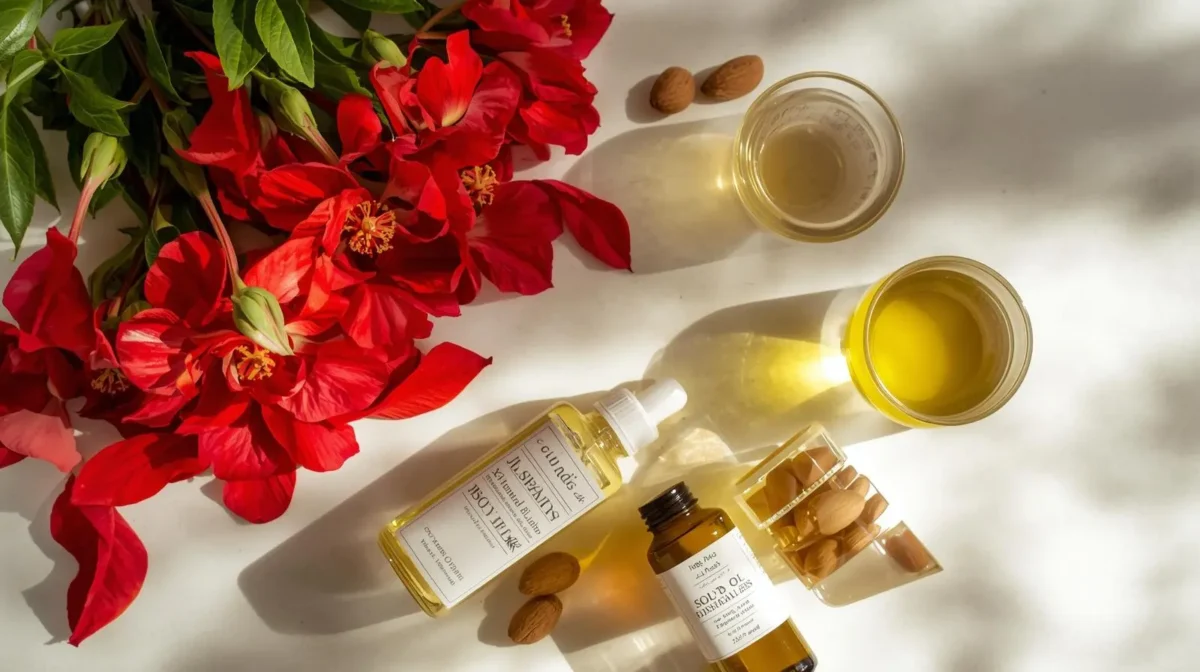
Troubleshooting: Diagnosing and Solving Common Hibiscus Issues
Even the most attentive gardeners encounter hiccups with their hibiscus plants. Knowing how to identify symptoms early and respond appropriately can mean the difference between a struggling plant and a thriving one. Below is a practical guide to diagnosing common issues, controlling pests and diseases, and restoring your hibiscus to vibrant health.
Understanding Common Symptoms
1. Yellowing Leaves
Causes:
- Over watering leads to root oxygen deprivation
- Nutrient deficiencies, especially iron or magnesium
- Pest infestation (aphids, spider mites)
- Cold stress or sudden temperature changes
Solutions:
- Adjust watering schedule, ensure soil is moist but not soggy.
- Fertilize with a balanced hibiscus-specific fertilizer or micro nutrients if deficiencies are suspected.
- Inspect for pests and treat promptly with organic options like neem oil.l
- Move the plant to a warmer location if temperatures drop below the tolerance.
2. Lack of Blooms
Causes:
- Insufficient sunlight (hibiscus needs at least 6 hours of direct sun)
- Improper pruning timing or technique
- Nutrient imbalance, particularly excess nitrogen
- Stress from pests or too small a container
Solutions:
- Increase sunlight exposure, possibly moving the plant outdoors or closer to a bright window.
- Correct pruning in late winter or early spring to encourage flower formation
- Use a bloom booster fertilizer with higher phosphorus content.t
- Repot into a larger container to support root growth.
3. Wilting or Drooping Leaves
Causes:
- Under watering or drought stress
- Over watering leads to root rot
- Extreme heat or sun scorch
- Transplant shock after moving or repotting
Solutions:
- Check soil moisture regularly and water deeply as needed.
- Ensure good drainage to prevent standing water.
- Provide temporary shade during extreme heat.t
- Handle plants gently during repotting or relocation.
4. Bud Drop
Causes:
- Sudden changes in temperature or light
- Pest attacks, particularly aphids or thrips
- Inconsistent watering
Solutions:
- Maintain a stable environment
- Inspect for and treat pests promptly
- Keep watering consistently to avoid stress.
5. Other Common Symptoms
Brown/Crispy Leaf Edges
- Causes: Under watering, low humidity, salt buildup in soil
- Solutions: Water deeply, increase humidity around the plant, and flush the soil if salts accumulate
Sticky Residue on Leaves (Honeydew)
- Causes: Aphids, mealybugs, or other sap-sucking insects
- Solutions: Inspect for pests and use insecticidal soap or neem oil for treatment
Pest Identification and Treatment
Common hibiscus pests include:
- Aphids: Tiny green, yellow, or black insects clustering on new growth
- Spider Mites: Minute red or brown mites, causing fine webbing and speckled leaves
- Mealybugs: White cottony masses on stems and leaves
Control Options:
- Organic: Neem oil, insecticidal soap, or rubbing alcohol on cotton swabs for spot treatment
- Chemical: Systemic insecticides if infestation is severe, following label instructions
Disease Identification and Treatment
- Powdery Mildew: White powder on leaves; improve air circulation and apply fungicide if needed
- Leaf Spot: Brown or black spots; remove affected leaves, avoid overhead watering, and apply fungicide
- Root Rot: Soft, brown roots due to overwatering; repot in fresh, well-draining soil and prune affected roots
Quick Reference Problem/Solution Table
|
Problem |
Possible Causes |
Solutions |
|
Yellowing Leaves |
Overwatering, Nutrient deficiency, Pests, Cold |
Adjust watering, Fertilize appropriately, Treat pests, Move to a warmer spot |
|
No Blooms |
Insufficient light, Improper pruning, High nitrogen |
Increase light, Prune correctly in late winter/early spring, Use bloom booster |
|
Wilting/Drooping |
Underwatering, Root rot, Heat stress, Transplant shock |
Check soil moisture, improve drainage, provide shade, and handle carefully |
|
Bud Drop |
Environmental stress, Pests, and Inconsistent watering |
Stabilize environment, Inspect for pests, Maintain consistent watering |
|
Brown/Crispy Leaf Edges |
Underwatering, Low humidity, Salt buildup |
Water deeply, increase humidity, and flush the soil |
|
Sticky Residue on Leaves |
Aphids, Mealybugs (honeydew) |
Inspect for pests. Use insecticidal soap or neem oil |
Tip: Use this table as a starting point. Observe your specific plant closely, as symptoms can overlap and may require combined solutions. Early detection and consistent care are key to keeping hibiscus healthy and blooming.
Conclusion & Further Resources
Hibiscus is more than just a striking flower; it’s a versatile plant that rewards gardeners with vibrant blooms, culinary delights, and wellness benefits. From understanding the differences between tropical and hardy varieties to mastering watering, fertilization, pruning, and pest management, cultivating hibiscus can be both enjoyable and deeply satisfying.
Key Takeaways
- Know Your Variety: Distinguishing between tropical and hardy hibiscus is crucial for providing the correct care, choosing suitable planting locations, and ensuring successful overwintering.
- Follow Essential Care Principles: Adequate sunlight, proper soil, consistent watering, fertilization, and pruning all contribute to healthy plants and abundant blooms.
- Explore Beyond the Garden: Hibiscus offers numerous applications beyond ornamental use, including teas, jams, natural dyes, and DIY skincare remedies, making it a plant with both aesthetic and practical value.
Encouragement for Your Gardening Journey
Don’t hesitate to experiment with different varieties, propagation techniques, and creative applications. Gardening is a journey of discovery, and hibiscus is particularly rewarding for those willing to learn and observe their plants closely. Each bloom, whether in the garden, on the kitchen counter, or in a homemade skincare remedy, reflects your care and attention.
Commitment to Accuracy and Expertise
This guide is periodically reviewed and updated by experienced gardening professionals to ensure all information reflects the latest horticultural best practices and scientific findings. This ongoing effort ensures you have reliable, actionable, and up-to-date guidance for growing and enjoying hibiscus.
Additional Reputable Resources
For further learning and community support:
- University Extension Offices:
- University of California Agriculture & Natural Resources
- Texas A&M AgriLife Extension
- University of California Agriculture & Natural Resources
- Botanical Gardens and Plant Societies:
- American Hibiscus Society
- Local botanical gardens often host workshops and hibiscus-specific events.
- American Hibiscus Society
- Gardening Forums & Online Communities:
- GardenWeb’s Hibiscus Forum
- Reddit r/gardening (for tips and community advice)
- GardenWeb’s Hibiscus Forum
- Recommended Books:
- Hibiscus: Cultivation and Care by E.A. Smith
- The Gardener’s Guide to Tropical Plants by L. Green
- Hibiscus: Cultivation and Care by E.A. Smith


